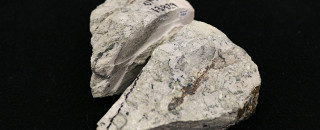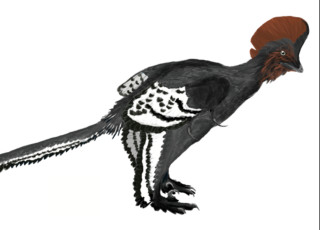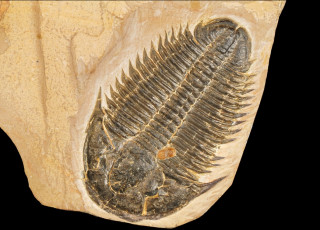From the Collection: Unknown Jurassic Lizard
By Michael Mozdy
Look closely. These are two halves of a nearly complete skeleton of a lizard that lived in the Late Jurassic, about 150 million years ago. While large dinosaurs towered above, this little lizard scurried below. Fossil lizard skeletons are very rare because they only fossilize under just the right conditions. This animal needed to be covered rapidly with fine-grain sediment in order to be preserved.
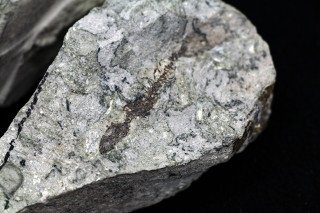
Closeup of one half of the unknown lizard
This fossil comes to us from our Utah State Paleontologist, James Kirkland. He explains the incredible story of how he got his hands on this find: "It was sent to me wrapped in a newspaper, and we were lucky it got here safe. The discoverer found it looking for fossil plants and because he didn't want to come in from his dig, he almost left it out in the desert. One rain would have destroyed it." The man who discovered it was a famed fossil plant collector named Steven Hatch. He found it in 2003 in south-central Utah.
Jurassic lizards, it turns out, are extraordinarily rare to find in the fossil record, mainly because they're so tiny. "It is the most complete lizard ever found in the Jurassic of North America," adds Kirkland.
We are actually loaning out this fossil in a few months to a researcher to help get it properly identified. Stay tuned for more information!
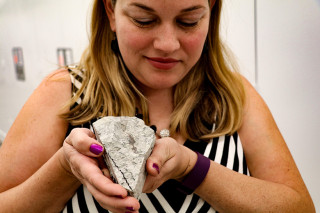
NHMU Collections Manager of Paleontology, Carrie Levitt-Bussian
he Natural History Museum of Utah is a part of the University of Utah in Salt Lake City. Our mission is to illuminate the natural world and the place of humans within it. In addition to housing outstanding exhibits for the public, NHMU is a research museum. Learn more.
